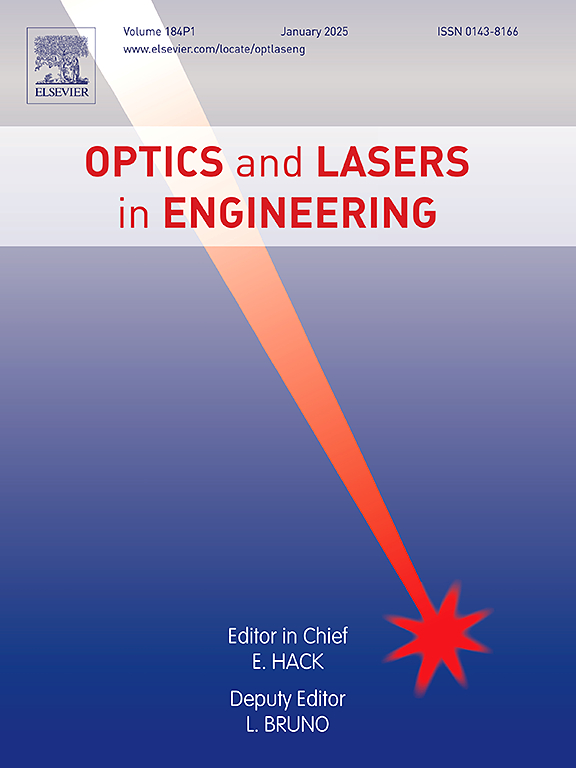SNR enhancement for Raman distributed temperature sensors using intrinsic modal functions with improved adaptive wavelet threshold denoising
IF 3.5
2区 工程技术
Q2 OPTICS
引用次数: 0
Abstract
To solve the low signal-to-noise ratio (SNR) and loss of signal detail in conventional denoising algorithms for Raman distributed temperature sensors, a novel approach is proposed. This method utilizes improved adaptive wavelet threshold denoising and Pearson correlation coefficient for processing intrinsic modal functions (IMFs). IMFs are obtained by complete ensemble empirical mode decomposition of the original signal, and the correlation coefficient of each IMF is calculated to identify its constituent components. The purely noisy IMFs are discarded, while those containing both noise and temperature signals undergo improved adaptive wavelet threshold denoising, and IMFs containing solely temperature signals are fully preserved. The final signal reconstruction is performed using the IMFs that have undergone noise reduction and the IMFs containing only temperature signals. Experiments show that SNR improvement from 12.83 dB to 19.04 dB at the 25 km fiber, with a reduction in maximum temperature error from 0.95 °C to 0.47 °C, and requires less cumulative averaging time.
基于改进自适应小波阈值去噪的内禀模态函数增强拉曼分布温度传感器信噪比
针对传统拉曼分布式温度传感器去噪算法存在的信噪比低、信号细节丢失等问题,提出了一种新的拉曼分布式温度传感器去噪方法。该方法利用改进的自适应小波阈值去噪和Pearson相关系数对内禀模态函数进行处理。通过对原始信号进行全系综经验模态分解得到IMF,并计算各IMF的相关系数来识别其组成成分。纯噪声的imf被丢弃,同时包含噪声和温度信号的imf被改进的自适应小波阈值去噪,仅包含温度信号的imf被完全保留。最后的信号重建是使用经过降噪的imf和只包含温度信号的imf进行的。实验表明,在25 km光纤中,信噪比从12.83 dB提高到19.04 dB,最大温度误差从0.95°C降低到0.47 °C,所需累积平均时间更短。
本文章由计算机程序翻译,如有差异,请以英文原文为准。
求助全文
约1分钟内获得全文
求助全文
来源期刊

Optics and Lasers in Engineering
工程技术-光学
CiteScore
8.90
自引率
8.70%
发文量
384
审稿时长
42 days
期刊介绍:
Optics and Lasers in Engineering aims at providing an international forum for the interchange of information on the development of optical techniques and laser technology in engineering. Emphasis is placed on contributions targeted at the practical use of methods and devices, the development and enhancement of solutions and new theoretical concepts for experimental methods.
Optics and Lasers in Engineering reflects the main areas in which optical methods are being used and developed for an engineering environment. Manuscripts should offer clear evidence of novelty and significance. Papers focusing on parameter optimization or computational issues are not suitable. Similarly, papers focussed on an application rather than the optical method fall outside the journal''s scope. The scope of the journal is defined to include the following:
-Optical Metrology-
Optical Methods for 3D visualization and virtual engineering-
Optical Techniques for Microsystems-
Imaging, Microscopy and Adaptive Optics-
Computational Imaging-
Laser methods in manufacturing-
Integrated optical and photonic sensors-
Optics and Photonics in Life Science-
Hyperspectral and spectroscopic methods-
Infrared and Terahertz techniques
 求助内容:
求助内容: 应助结果提醒方式:
应助结果提醒方式:


